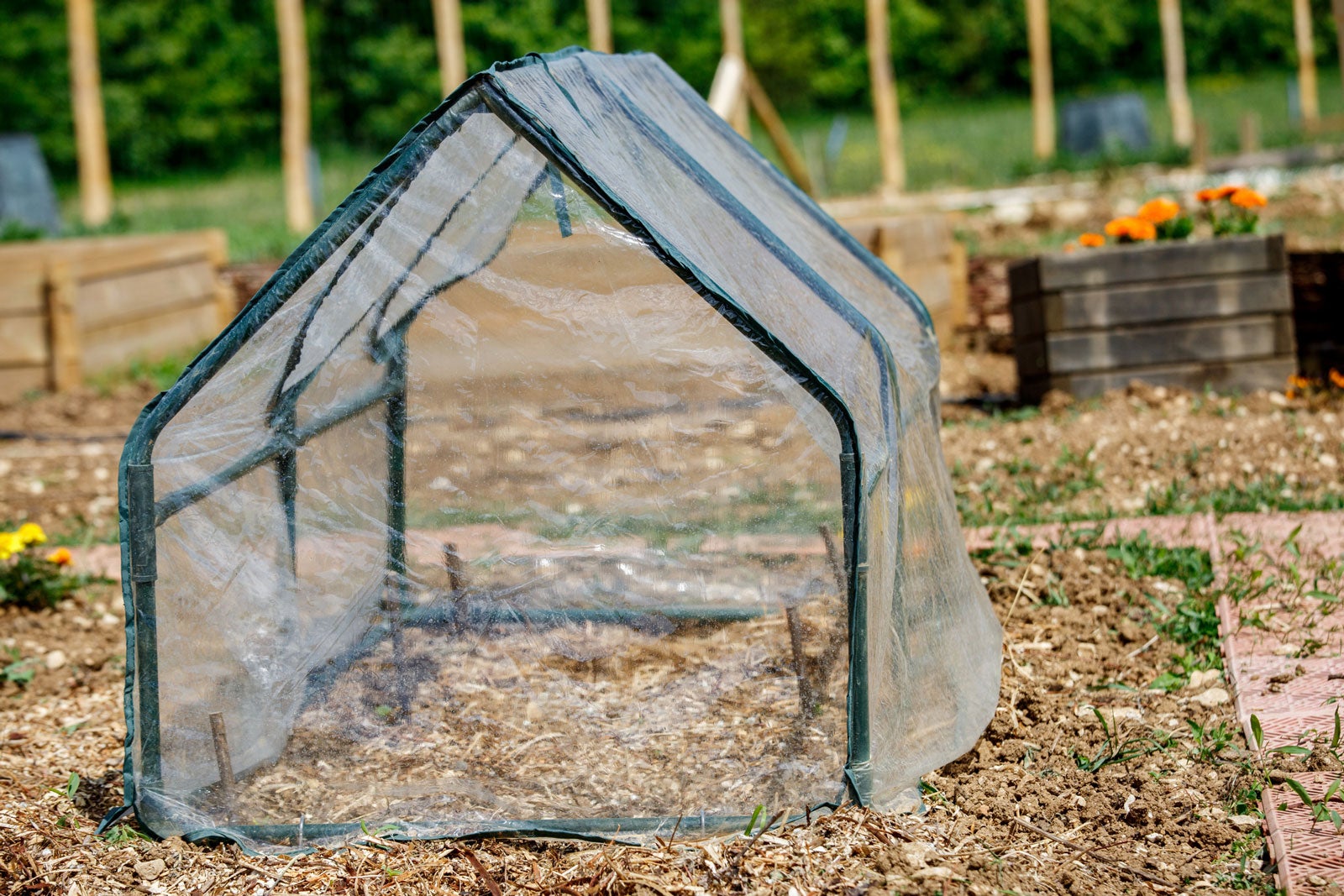Grow Tent Benefits - Tips On Using Grow Tents For Plants

In cooler northern climates, warm summer weather may not last long enough to grow some warm season crops such as watermelons, tomatoes and even peppers. Gardeners can extend the season with elaborate greenhouses, but the effort and expense may be too much if you're not planning to grow a large garden. If you've got a more modest garden in mind and a smaller amount of expenses you can afford, using grow tents for plants is a logical alternative. What is a grow tent? The shape and design may vary, but it is basically a portable frame covered in thick plastic sheeting, designed to capture and keep in heat to encourage plants to grow longer.
Grow Tent Benefits
Whether they're temporary or semi-permanent, grow tent benefits are the same. Capturing heat and holding it in an enclosed area creates a mini climate, which allows plants to grow longer than your outside environment would naturally allow. In the spring, setting up a grow tent in your chosen planting area allows the ground to heat up and dry out faster, allowing your plants to be transplanted earlier in the season. This can give you an additional two to three weeks at the beginning of the growing season. It also offers a sheltered environment for hardening off early seedlings before placing them in the garden. At the end of the growing season, grow tents can hold in enough heat to allow the last of your harvest to ripen before the frost arrives. The last of your tomatoes and peppers, and even your potato plants, will be able to live longer and produce more food in the longer artificial season.
Tips on Using Grow Tents for Plants
Grow tents use plastic for walls and roofs instead of glass, like a greenhouse. Corrugated plastic, like that used to patio roofs, is a great choice for a permanent grow tent. For more temporary structures that last for either one or a couple of seasons, 8 mil plastic fits the bill. Avoid thinner plastics as the wind will tear it apart by the end of the season. When you research information about grow tents, you will find that the design varies from gardener to gardener, and is only constrained by the imagination of the builder. Because of these differences in design, there will be various things to consider, or additional concerns that need to be addressed. For example, you may wonder about the temperature difference within the grown tent as opposed to that outdoors. This, of course, is dependent not only on the type of grow tent being used but the conditions outside like sun vs. cloudy weather. For this reason, you may find it helpful to include a thermometer inside the tent to monitor these conditions. You may also wonder about when to open or close the door of your grow tent and the effect this has on the plants inside. Again, this varies on weather (and the plants grown) but generally, if it's nice outside for the plants you have, opening the tent some to allow for a little airflow will not hurt anything. Close the door when temps fall below (or are expected to) the acceptable conditions for the plants being grown. It is best to close the door a few hours prior to the setting of the sun so that the tent has a chance to build up enough heat to keep it warm overnight. Once closed, heat and moisture will be trapped inside. While the sun is out, this heat continues to build but also remains when darkness falls. DIY grow tent design is a matter of need, not attractiveness. If you only have one or two tomato plants to save at the end of the summer, a simple sheet of plastic wrapped around the tomato cage can be enough. For larger garden plots, construct a frame from wood, bamboo or PVC pipes and fasten the plastic to the edges to enclose the interior space. There are many plants and different designs, all with various benefits. At a basic level, grow tents (like the one pictured above) are great for seed starting and cutting propagation. Grow tents can be good for starting crops early or extending the season. Whatever design you choose should fit the plants grown and its overall purpose.
Gardening tips, videos, info and more delivered right to your inbox!
Sign up for the Gardening Know How newsletter today and receive a free copy of our e-book "How to Grow Delicious Tomatoes".
-
 Looking For Plants To Give You The Soft And Fuzzies? Try These 5 Fuzzy Leaf Plant Options
Looking For Plants To Give You The Soft And Fuzzies? Try These 5 Fuzzy Leaf Plant OptionsLovers of texture, drama, silver foliage and tactile plants will adore these special sensory garden additions. These fuzzy leaf plant options will leave you all aglow
By Susan Albert
-
 Get Ready For A Summer Of Hummers! Grow These Full Sun Hummingbird Plants and Flowers
Get Ready For A Summer Of Hummers! Grow These Full Sun Hummingbird Plants and FlowersIf you’re lucky enough to enjoy a sunny backyard, make sure you are maxing out on your pollinator opportunities and grow these full sun hummingbird plants and flowers
By Tonya Barnett